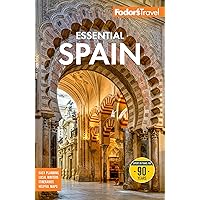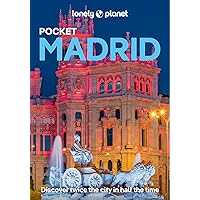Carnival is one of Spain’s most vibrant and diverse celebrations, a time when the country’s regions come alive with color, music, and revelry. Though rooted in a shared cultural tradition, each region brings its own distinctive flair to the festivities, reflecting local customs and history. In Cadiz, the carnival is famous for its witty and satirical songs. The city’s streets fill with performers known as ‘chirigotas’ and ‘comparsas,’ who engage in friendly competitions of clever lyrics and humorous performances. The climax of the event is the ‘Gran Final,’ where the best groups showcase their talents at the Gran Teatro Falla. Visitors can also enjoy the vibrant street parades, elaborate costumes, and the local delicacies that Cadiz is known for. In Santa Cruz de Tenerife, the carnival is a dazzling spectacle often compared to Rio de Janeiro. The highlight is the ‘Queen’s Gala,’ where contestants vie for the title of Carnival Queen in extravagant costumes adorned with feathers and rhinestones. The festivities also include the ‘Coso,’ a grand parade featuring floats, dancers, and musicians that winds through the streets of Santa Cruz. A unique tradition in Tenerife is the ‘Burial of the Sardine,’ a mock funeral procession that symbolizes the end of the carnival, complete with mourners and a giant sardine that is eventually set alight. In the Basque Country, Tolosa is known for its traditional carnival, where the focus is on local customs and folklore. The event begins with the ‘Jueves Gordo,’ or Fat Thursday, featuring parades and gastronomic feasts. The highlight is the ‘Asteartita,’ a day when the town is filled with music and dance. Residents and visitors alike join in traditional Basque dances, and the streets resonate with the sound of txistu and tamboril, the region’s traditional instruments. In Las Palmas de Gran Canaria, the carnival is a lively celebration that blends African, Caribbean, and Spanish influences. The event features the ‘Drag Queen Gala,’ a flamboyant competition where performers in outlandish costumes take to the stage. The carnival also includes a variety of parades, with the ‘Cabalgata’ being the most spectacular, featuring floats, dancers, and bands that fill the streets with music and joy. One of the most unique events is the ‘Dog Carnival,’ where locals dress up their pets and parade them through the streets. In Sitges, a coastal town near Barcelona, the carnival is known for its inclusive atmosphere and vibrant LGBTQ+ presence. The event begins with the arrival of the ‘Carnival King,’ who presides over the festivities. Highlights include the ‘Rua de la Disbauxa’ and ‘Rua de l’Extermini,’ two grand parades that feature elaborate floats and costumes. The town also hosts the ‘Carrera de Tacones,’ a high-heeled race that draws participants from all over the world. Sitges’ carnival is a celebration of diversity, with parties and events that continue late into the night. The Carnaval de Águilas in Murcia is one of the most colorful and lively carnivals in Spain. Known for its extravagant costumes and vibrant parades, the event is a feast for the senses. The highlight is the ‘Batalla de Cascarones,’ a playful battle where participants throw decorated eggshells filled with confetti at each other. The carnival also features ‘La Cuerva,’ a traditional drink that is shared among revelers, and the ‘Musa y Don Carnal’ competition, where two representatives are crowned as the symbols of the event. In Badajoz, the carnival is a major event in the Extremadura region, known for its lively parades and street parties. The city’s ‘Comparsas,’ groups of dancers and musicians, compete in the ‘Gran Desfile de Comparsas,’ where they showcase their skills in a colorful procession. The festivities also include the ‘Murgas’ competition, where groups perform humorous songs that often satirize local and national events. Badajoz’s carnival is a celebration of community spirit, with locals and visitors alike joining in the fun. In the region of Galicia, the Carnival of Verín is one of the most traditional, with roots dating back centuries. The event begins with the ‘Xoves de Compadres,’ a day when men dress up and take to the streets, followed by the ‘Xoves de Comadres,’ when the women have their turn. The highlight is the ‘Martes de Entroido,’ or Shrove Tuesday, featuring a grand parade with floats and costumed participants. A unique tradition is the ‘Fariñada,’ where revelers throw flour at each other, symbolizing the cleansing of sins. Verín’s carnival is a celebration of folklore, with traditional music and dances that reflect the region’s rich cultural heritage. In Ciudad Rodrigo, near Salamanca, the carnival is famous for its ‘Carnaval del Toro,’ where bulls play a central role in the festivities. The event begins with the ‘Encierro,’ a traditional bull run through the town’s streets, followed by bullfights in the local plaza. The carnival also includes parades and costume contests, with locals dressing up in elaborate outfits. The ‘Toro del Aguardiente,’ a nighttime bull run, is a unique spectacle, with participants carrying torches as they run alongside the bulls. Ciudad Rodrigo’s carnival is a celebration of tradition, with a lively atmosphere that draws visitors from across Spain. In Navarra, the Carnival of Ituren and Zubieta is one of the oldest in Spain, with origins that date back to pagan times. The event is centered around the ‘Joaldunak,’ groups of men dressed in traditional costumes, who parade through the streets ringing cowbells to ward off evil spirits and ensure a good harvest. The carnival also features the ‘Zanpantzar,’ a procession where participants carry a giant effigy symbolizing winter, which is eventually burned in a bonfire. The festivities include traditional dances and music, with locals and visitors alike joining in the celebrations. In Cádiz, the carnival is known for its humorous and satirical edge. The ‘Chirigotas’ and ‘Comparsas,’ groups of singers and performers, take to the streets to entertain the crowds with witty songs that often poke fun at local and national events. The highlight of the event is the ‘Gran Final,’ where the best groups compete for the coveted title. The carnival also includes a variety of parades, with the ‘Cabalgata del Humor’ being one of the most popular, featuring floats and costumed participants. Cádiz’s carnival is a celebration of creativity, with a lively atmosphere that draws visitors from across Spain. The Carnaval de Cebreros in Ávila is one of the most traditional in Spain, with roots dating back to the 16th century. The event begins with the ‘Desfile de Carrozas,’ a parade of floats and costumed participants that winds through the town’s streets. The highlight is the ‘Manteo del Pelele,’ a playful tradition where a straw figure is tossed into the air by revelers. The carnival also includes the ‘Gastronomic Day,’ where locals share traditional dishes, and the ‘Burial of the Sardine,’ a mock funeral procession that marks the end of the festivities. Cebreros’ carnival is a celebration of community spirit, with a lively atmosphere that draws visitors from across the region. In Águilas, the carnival is one of the most colorful and lively in Spain, known for its extravagant costumes and vibrant parades. The event begins with the ‘Pregón,’ a proclamation that marks the start of the festivities, followed by the ‘Desfile de la Traída de la Virgen de la Caridad,’ a procession where a statue of the Virgin is carried through the streets. The carnival also features the ‘Batalla de Cascarones,’ a playful battle where participants throw decorated eggshells filled with confetti at each other. Águilas’ carnival is a celebration of creativity, with a lively atmosphere that draws visitors from across Spain. In Gijón, the carnival is known for its family-friendly atmosphere and inclusive events. The highlight is the ‘Desfile de Antroxu,’ a grand parade featuring floats and costumed participants that winds through the city’s streets. The carnival also includes the ‘Carnaval Infantil,’ a children’s event with games and activities, and the ‘Concurso de Charangas,’ a competition where groups perform humorous songs and skits. Gijón’s carnival is a celebration of community spirit, with a lively atmosphere that draws visitors from across the region.
Explore Spain’s Unique Carnival Celebrations: A Regional Guide
Disclaimer
"Please note that the information provided on this website serves as a general guide. Requirements might vary depending on your country of origin. Always refer to up-to-date and official sources or consult the corresponding consulate for specific procedures. Keep in mind that the details shared in this article might have changed after its publication. It's essential to verify the most recent data, particularly concerning establishments like hotels or restaurants. SpainSeeker.com is not responsible for any changes or discrepancies."

Subscribe
Recommended books
Popular




